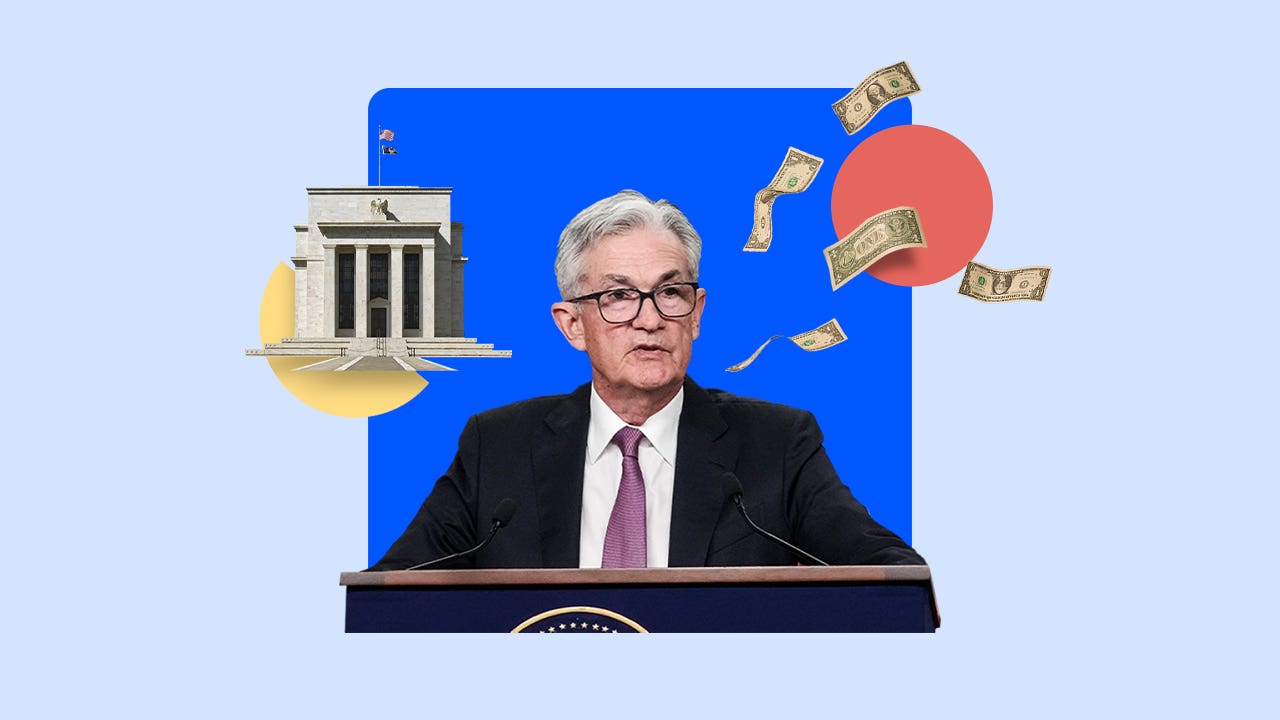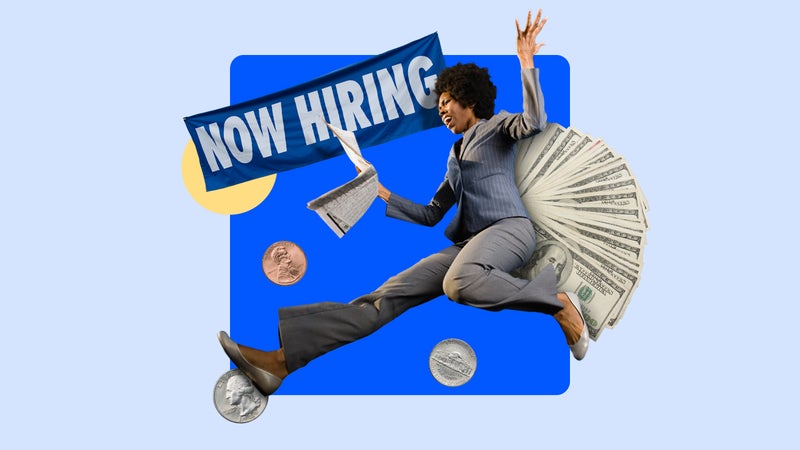Survey: Fed won’t begin cutting interest rates until 2024 as officials keep tackling inflation

The Bankrate promise
At Bankrate we strive to help you make smarter financial decisions. While we adhere to strict , this post may contain references to products from our partners. Here's an explanation for .
The key interest rates that influence the price of financing anything from a car to a home are soaring, driving up the price of borrowing money to the highest in years — and a new survey from Bankrate finds that the nation’s top economists expect them to stay high for a while longer.
The majority (or 94 percent) of economists say the Fed could begin cutting interest rates in 2024, while a smaller share (or 6 percent) expect the Fed to cut rates in 2025 or later, according to Bankrate’s Economic Indicator poll for the third quarter. No expert projects that the Fed will cut rates this year. Those expectations are in line with the Fed’s own projections, which showed in September that rate cuts aren’t on the table until at least 2024.
The nation’s top economists see the key 10-year Treasury yield — which influences longer-form debt such as the 30-year fixed-rate mortgage — easing somewhat over the next 12 months, edging down to 3.99 percent from its 4.56 percent level at the time polling ended. That’s still, however, a rate that hasn’t been seen since the 2008 financial crisis.
It comes amid a massive bond-market sell-off to start October, with the rate on the 10-year Treasury soaring more than 40 basis points since the Fed’s September meeting. The key yield is now at the highest level since 2007 and could keep climbing as investors brace for the reality that rates will hold higher for longer.
In their updated projections, Fed officials also signaled they plan to raise interest rates one more time this year, though that depends on what happens with financial markets, the economy — and inflation.
We might not be at the point exactly when the Federal Reserve is ready to sound the all-clear on further interest rate hikes, but it appears that we can see it from here.— MARK HAMRICK | BANKRATE SENIOR ECONOMIC ANALYST
Key insights on the economy from Bankrate’s third-quarter Economic Indicator poll
When will the Fed be able to cut interest rates?
Consumers are seeing the highest borrowing costs in years thanks to the Fed’s aggressive push to cool inflation. Car loans haven’t been this high since 2008, Bankrate rate data shows. Mortgage rates are the highest since December 2000 — and are on the verge of cracking 8 percent. Even home equity loans are hitting 8.71 percent, higher than at any point during the financial crisis and Great Recession of 2007-2009.
Officials have one primary objective: slowing inflation to their goal of 2 percent. Until the Fed knows those price pressures are on a sustainable path, officials might not be comfortable giving the economy more accommodation — especially because it could risk pushing up prices and kickstarting another vicious inflationary cycle.
Fed history suggests that easing too soon is to err at the cost of the economy and gives inflation the chance to resurge. Better to tighten too much and make sure inflation is dead. As such, the Fed is proceeding with caution and keeping rates higher for longer.
— Odeta KushiDeputy chief economist at First American Financial Corporation
Officials, however, might not have to wait for inflation to hit 2 percent before they judge it’s time to cut rates. A crucial part of the debate will be determining the “real” cost of money — or interest rates minus the overall rate of inflation. A positive number suggests rates are taking steam away from the economy; a negative number implies rates aren’t yet restricting economic growth.
Interest rates are now more than 1.5 percentage points above the overall rate of inflation — and the Fed doesn’t have to raise rates for that cost to grow. The “real” cost of money will only continue to grow if price pressures fall and rates stay the same.
The Fed may eventually decide it doesn’t need to slow the economy as forcefully through the rest of inflation’s journey back to 2 percent — as long as those price pressures are improving, that is.
The Fed will begin cutting rates in Q2 or later of 2024 if inflation data shows a meaningful downward trend. This means that core inflation will not have to hit 2 percent but be below 3 percent for a few quarters before the Fed begins to make modest cuts.
— Yelena MaleyevSenior economist, KPMG
Overall inflation in August rose 3.7 percent from a year ago, while a separate measure of price pressures excluding food and energy-related components shows that prices have climbed a stickier 4.3 percent, the latest consumer price index (CPI) data from the Bureau of Labor Statistics shows.
Meanwhile, a separate measure of inflation that the Fed specifically targets — the personal consumption expenditure (PCE) index — rose 3.5 percent in August from a year ago, Department of Commerce data shows. Excluding food and energy, those prices rose 3.9 percent.
Once inflation is clearly moving towards 2 percent, the weakness in the economy will be the focus.
— Lawrence YunChief economist, National Association of Realtors
-
The Third-Quarter 2023 Bankrate Economic Indicator Survey of economists was conducted Sept. 9-26. Survey requests were emailed to economists nationwide, and responses were submitted voluntarily online. Responding were: Mike Fratantoni, chief economist, Mortgage Bankers Association; Odeta Kushi, deputy chief economist, First American Financial Corporation; Tuan Nguyen, economist, RSM US LLP; Bernard Baumohl, chief global economist, The Economic Outlook Group; Yelena Maleyev, senior economist, KPMG US; John E. Silvia, founder, Dynamic Economic Strategy; Gregory Daco, chief economist, EY; Brian Coulton, chief economist, Fitch Ratings; Michael Pearce, lead U.S. economist, Oxford Economics; Scott Anderson, chief U.S. economist, BMO; Dante DeAntonio, senior director, Moody’s Analytics; Lawrence Yun, chief economist, National Association of Realtors; Bernard Markstein, president and chief economist, Markstein Advisors; Robert Frick, corporate economist, Navy Federal Credit Union; Bill Dunkelberg, chief economist, NFIB; Mike Englund, chief economist, Action Economics; and an economist at a private-sector analytics firm who asked to remain anonymous.

